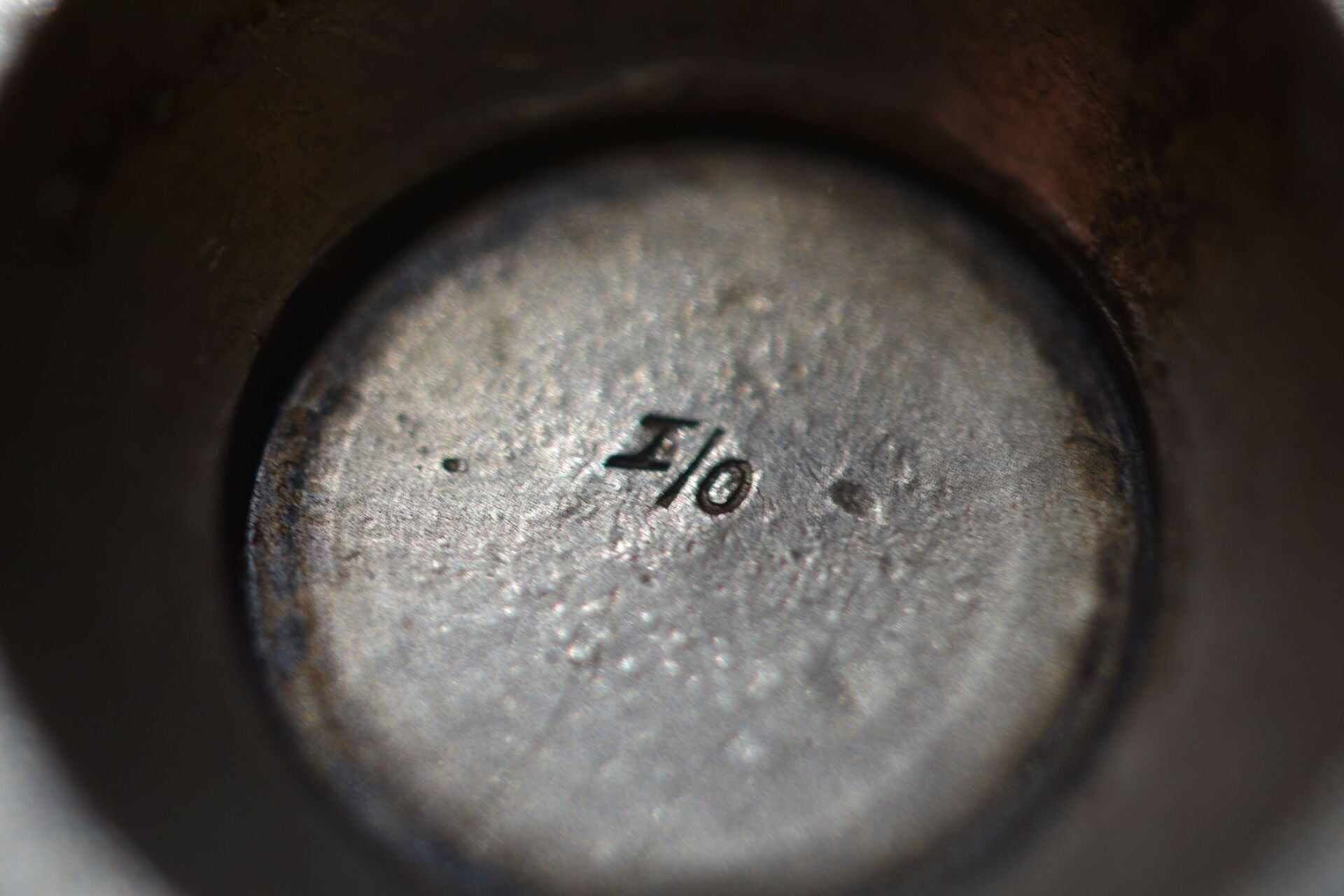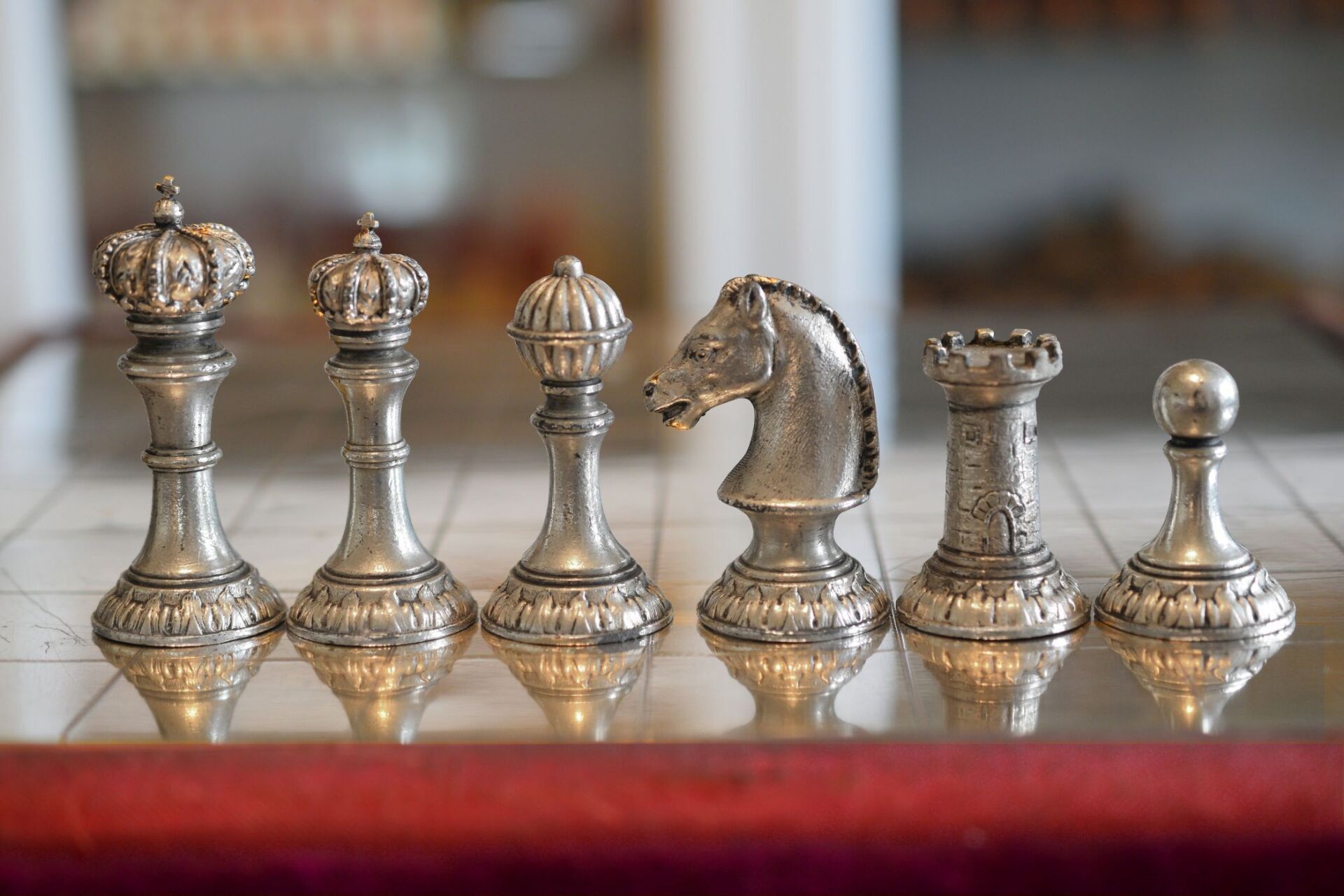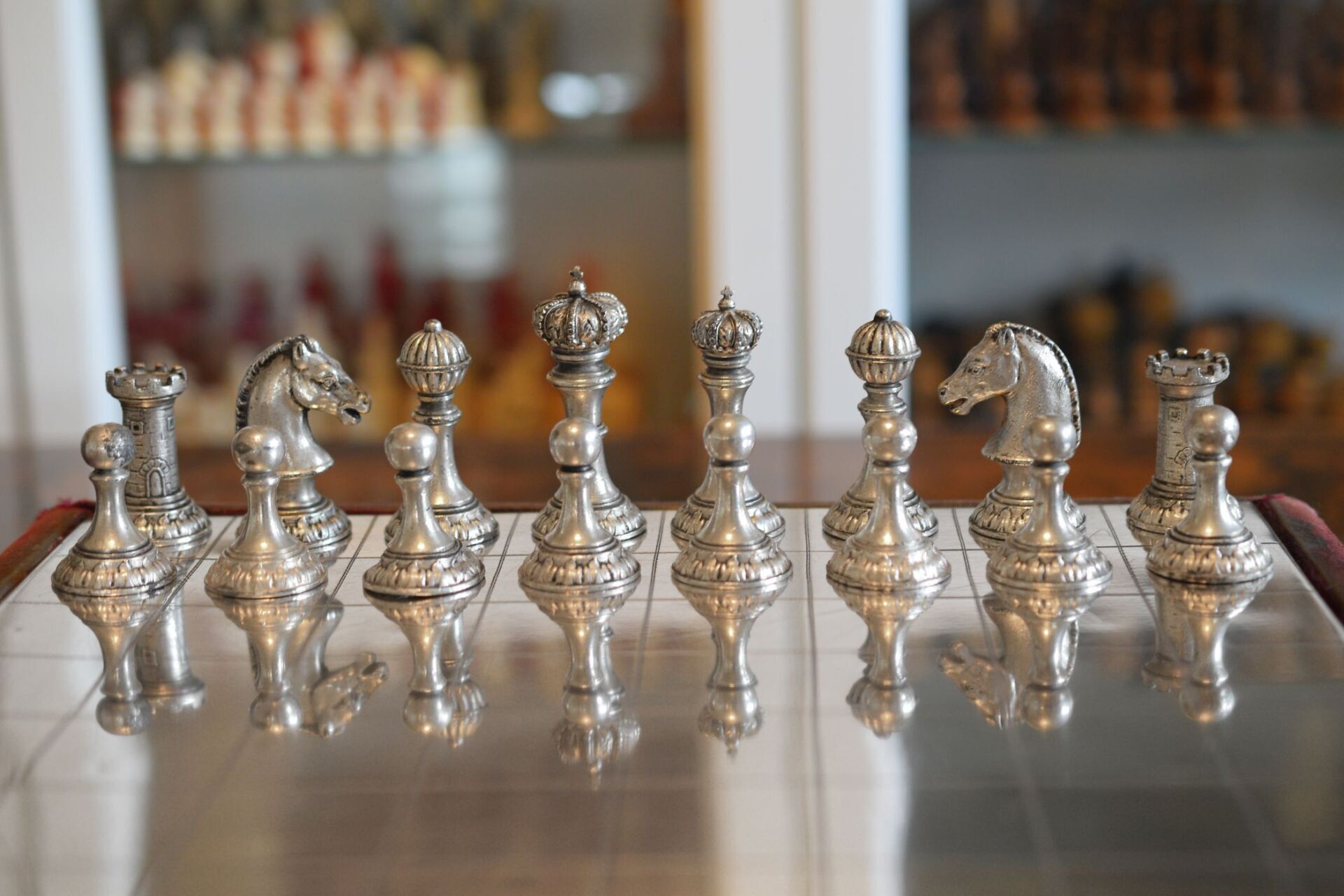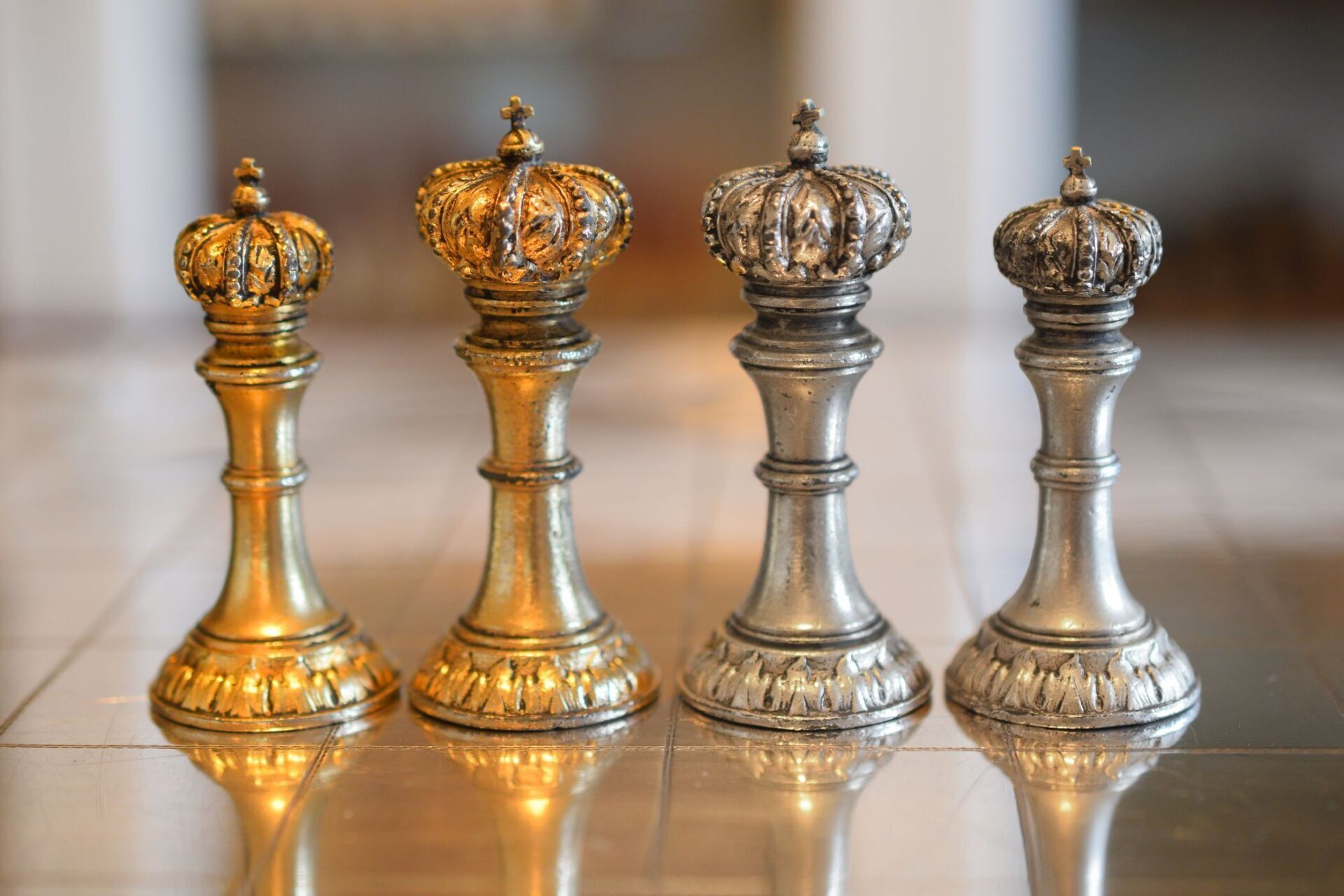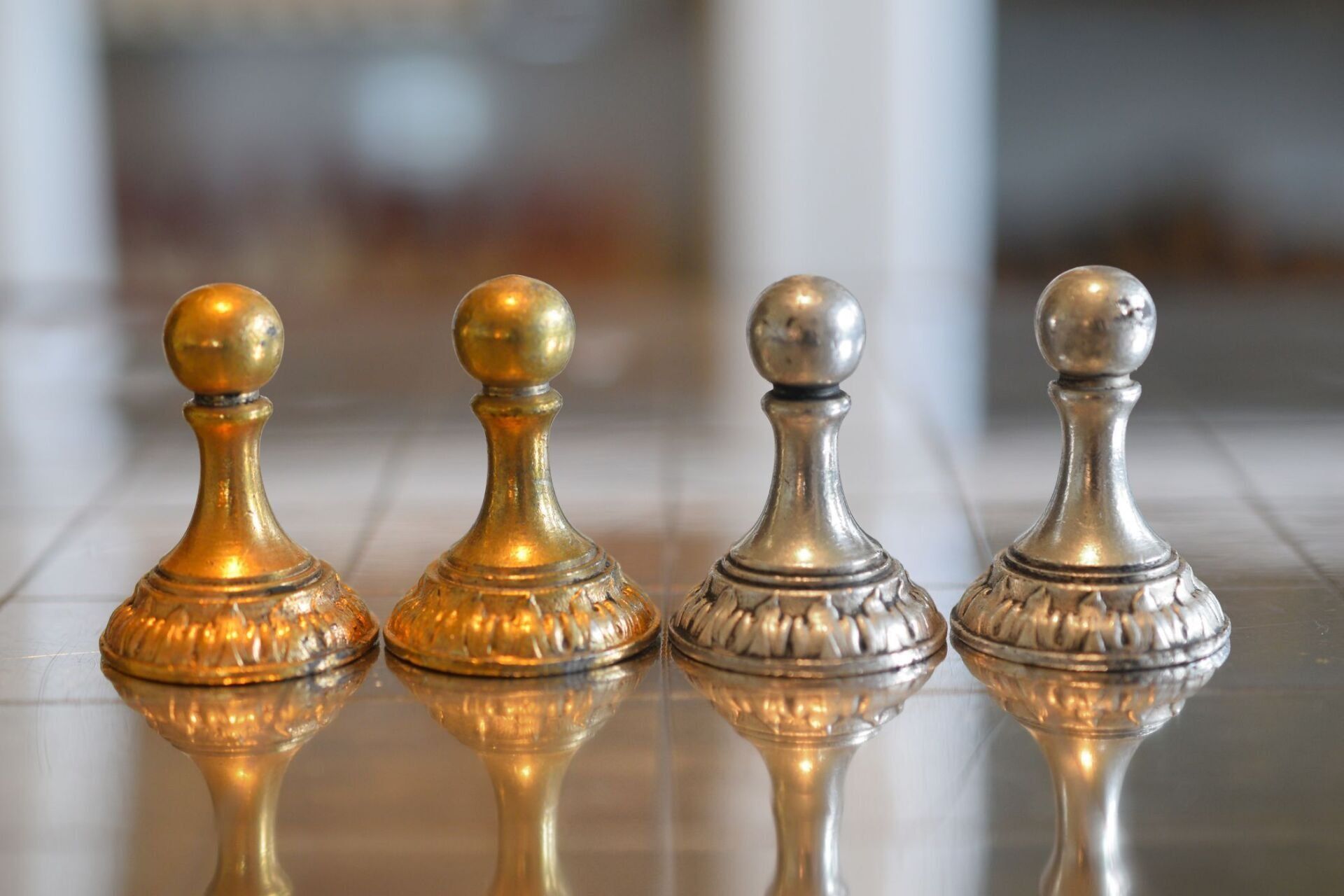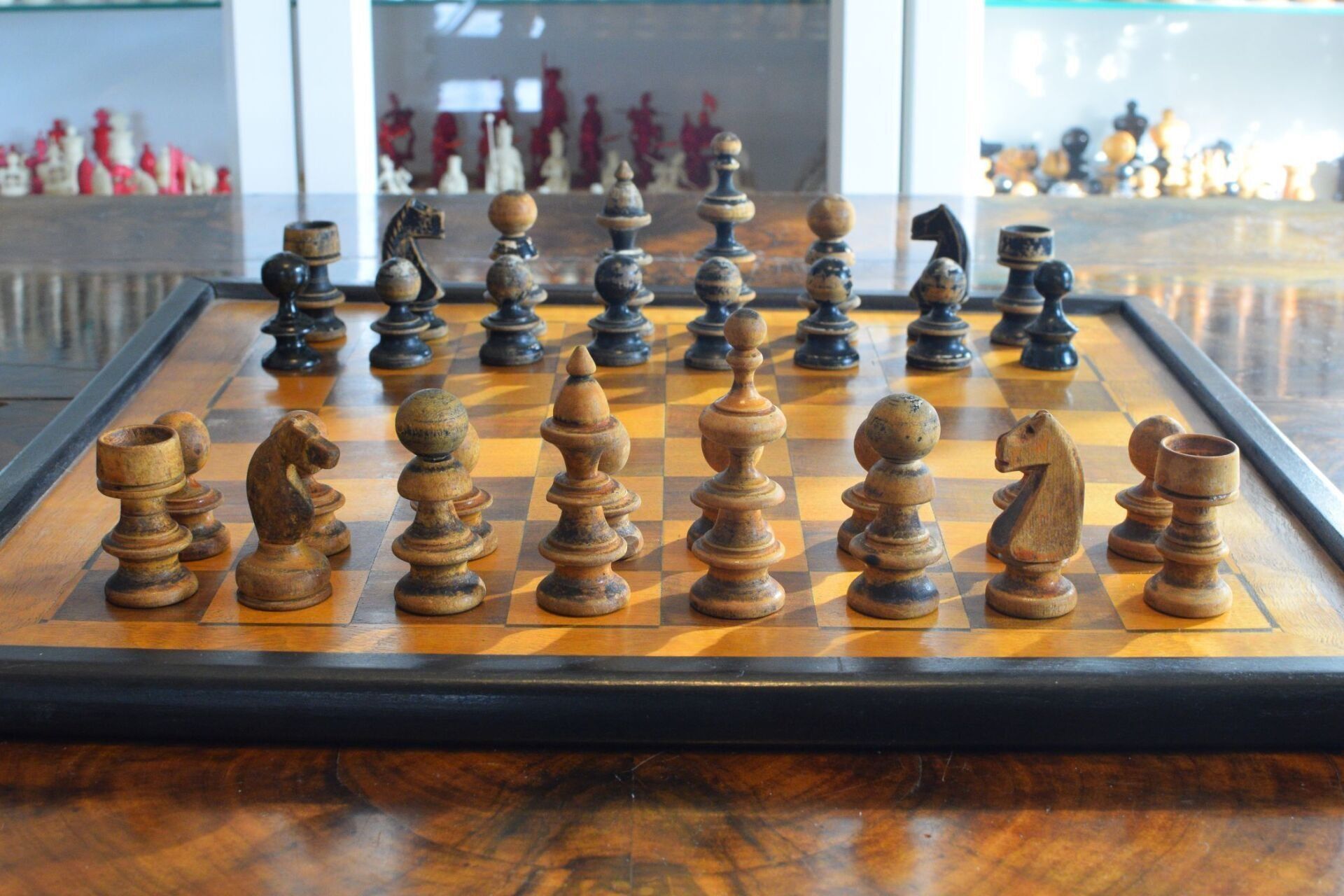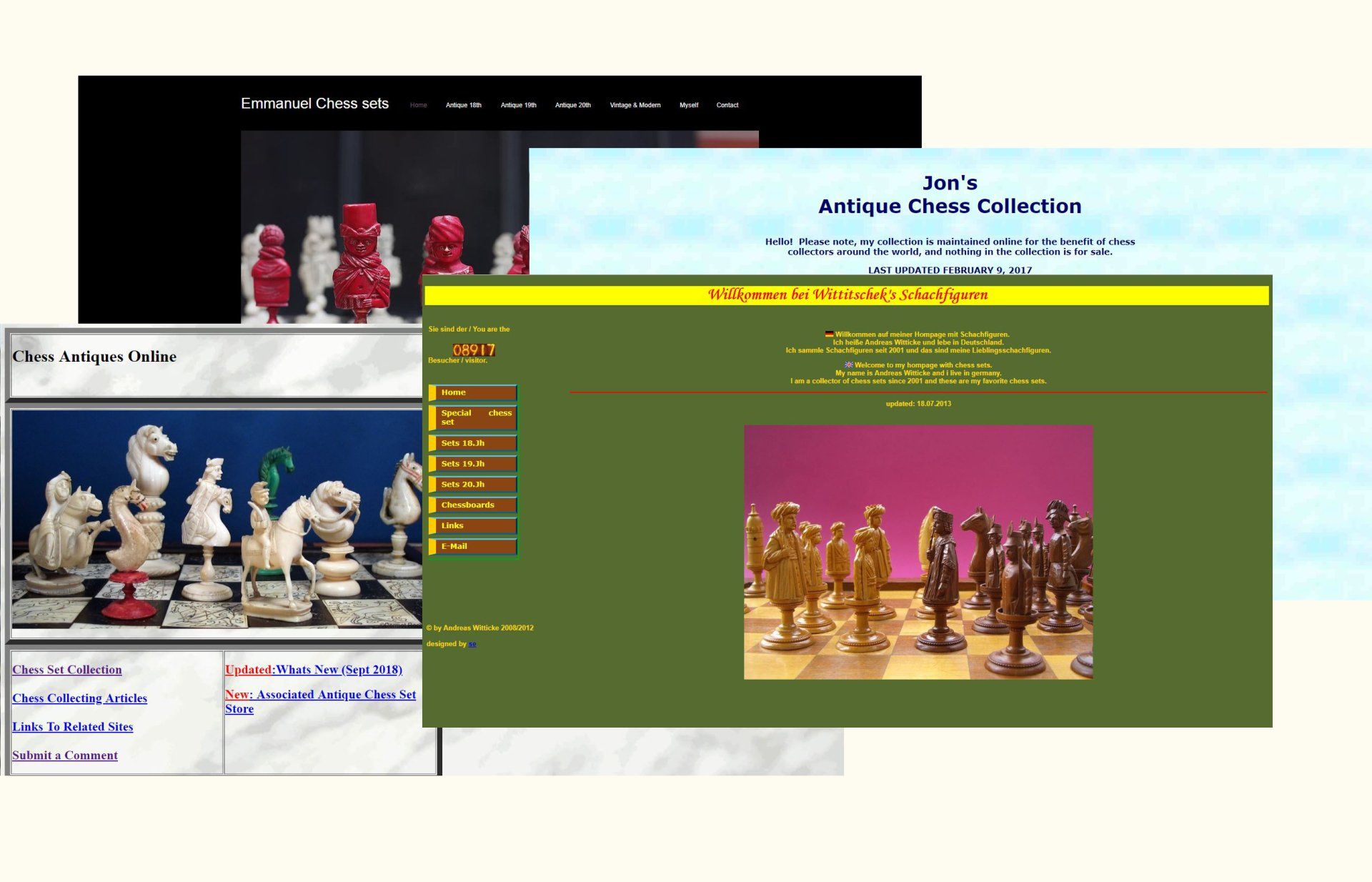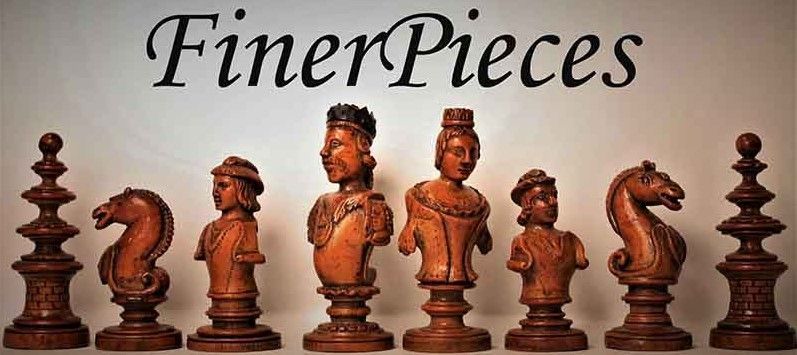German Metal Chess Set by Württembergische Metallwarenfabrik (WMF), 1903
A very special and rare chess set made of brass, one side gilded, the other side silvered. The pieces of this extremely elegant set are very delicately crafted with a lot of attention to detail. Sets like this have been sold numerous times in international auctions in the past decades and have been subject to discussion in some of the well known publications. Nonetheless, some of the information given in this context are wrong.
Some auctioneers have described this set of being in the Staunton pattern, which is obviously not correct. Hans and Barbara Holländer describe the set as a "modified Régence form" (cf. Holländer, Schachpartie durch Zeiten und Welten, p. 242). What is special about the set are the magnificent and ornate crowns on the kings and queens as well as the very unusual head of the bishops which is made in the form of a large ball with vertical indentations. The set comes in a fitted board box with a silvered board on top of the lid and covered on the outside in a burgundy velvet. The colour of the box differed, however, as they were also available in dark blue.
Other misconceptions concern the origin of this set. Victor Keats is showing a picture of a similar set from the Melsen Collection in his book "Chessmen for Collectors" on page 119, describing it as a "Continental playing set of metal with box board, surrounded with deep blue velour and the interior padded in the form of the chess pieces, one side silvered, the other gilded, nineteenth century", seeing the origin of this set in France. This is wrong, however. These sets were clearly made (exclusively) by Württembergische Metallwarenfabrik in Germany.
The company emerged from the Straub & Schweizer metal goods factory, which was founded in Geislingen an der Steige in 1853 by Daniel Straub, a miller from Geislingen, together with his brothers and skilled metalworkers Louis and Friedrich Schweizer. From 1862 Gottlieb Daimler worked for about three years as a designer for the Straub & Schweizer metal goods factory. After the Schweizer brothers left, the factory was renamed Straub & Sohn in 1866. In 1880 the company merged with the then financially weakened but more progressive Metallwarenfabrik Ritter & Co, Esslingen am Neckar, to form the Württembergische Metallwarenfabrik (WMF), which is still in existence today.
I got in touch with WMF's archive to find out more about the set. According to their data the set (only) appears in the 1903 catalogue. All the pieces are hallmarked "I/O" on the underside. This hallmark was used exclusively by WMF. The mark stood for a normal silver plating for use, i.e. 1g of precipitated fine silver was spread over 1 dm² of surface on both sides. The majority of the antique WMF articles have this hallmark. According to the archive of WMF, it is very likely that there were no other variations of this set. This again cannot be entirely true, however. Hans and Barbara Holländer (cf. supra) show a similar set in a gilded metal case with ornaments reminding of the famous Geislingen bone sets. This set is dated to 1894, an information which to my knowledge was also provided by the WMF archive.
